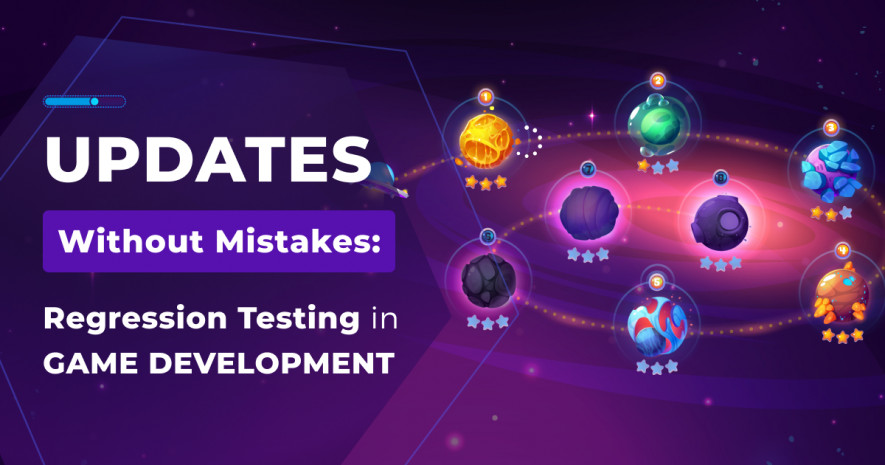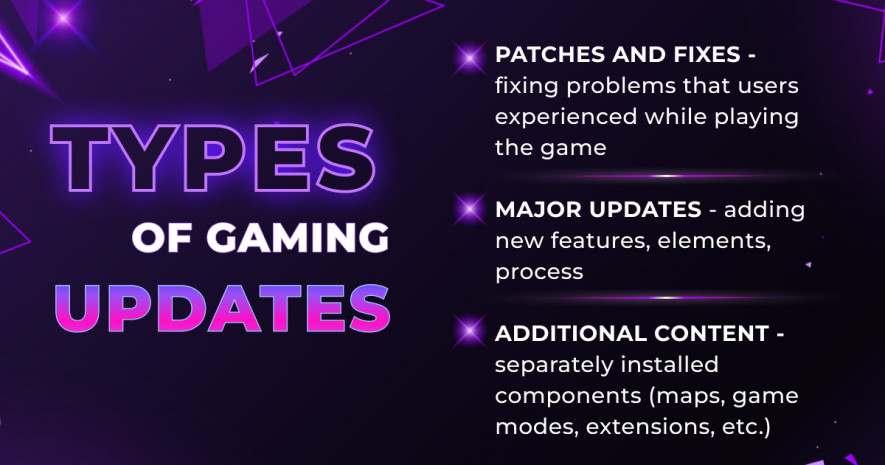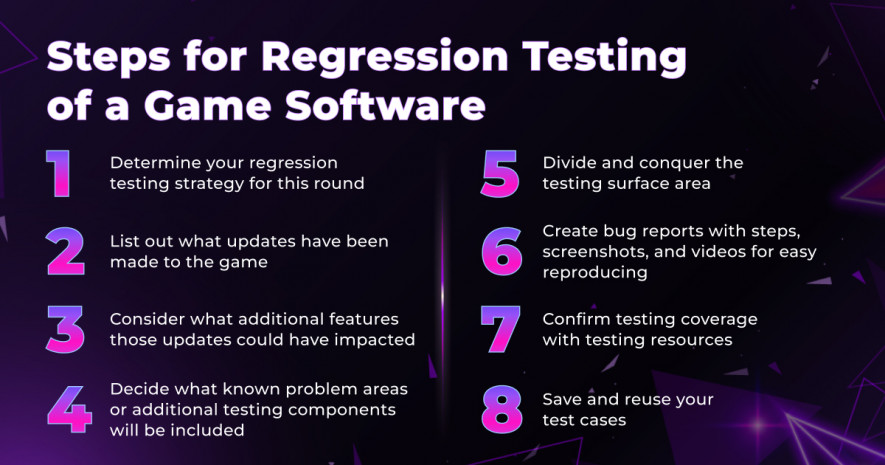- QATestLab Blog >
- Game Testing >
- Updates Without Mistakes: Regression Testing in Game Development
Updates Without Mistakes: Regression Testing in Game Development

Global market trends indicate that the economic slowdown will hit the technology and gaming sectors, as well as entertainment in general. A new report from Ampere Analysis predicts that the global gaming industry could shrink by 1.2% this year to $188 billion after two years of enormous growth. The downside factors are not only the lack of new releases but also restrictions on the supply of hardware such as consoles and controllers, inflation, and rising experimental spending as pandemic-era restrictions loosen.
New Is Well Updated Old
When retention of positions and consumers is a priority for most companies, it is crucial to maintain the quality of already released products. The attitude and satisfaction of the players force the developers to update the versions of the games regularly. It helps with bug fixes and troubleshooting, and it’s also an excellent opportunity to add new content, game modes, or features to attract new users and retain existing ones.
Whether the update is big or small, each is a form of communication with the players, showing that the creators listen to feedback and care about their users.

Regression testing ensures that new updates to the game or iterations of existing code do not lead to unintentional bugs or crashes.
Game Re-testing in a Nutshell
Regression testing for games is the selective re-testing of a system or component to verify that modifications have not caused unintended effects on previously running software/application modules. At the same time, even regression testing can challenge testers. Here are some of the reasons:
- The number of test cases in the regression set increases with each new feature.
- Sometimes running the entire set of regression tests becomes difficult due to time and budget constraints.
- Minimizing a set of tests while maximizing test coverage is not an easy task.
- Determining the frequency of regression tests after each modification or each build update, or after a bunch of bug fixes is always a problem.

Well, that seems to be a task for the experts. That is, for QATestLab specialists. We asked them for some tips for effective game regression testing. Catch it!
QA Life Hacks for Regression Testing
Identify test cases that have frequent defects
Some product areas are so bug-prone that they usually don’t work with a small code change. We can track failed test cases due to such areas throughout the product cycle and cover them with a set of regression tests.
Pay attention to the test cases that test the main functions of the game
Before developing test cases, find out the game’s main features. Verify that the test case covers all the features specified in the requirements document. You can use a traceability matrix to ensure that no requirement is left unverified.
Include all integration test cases
Even if integration testing is a separate part of the software testing cycle, its test cases should be included in the regression test suite. The last fix in an already tested application might break integrity between different modules. For example, data may be lost through an interface, messages may not be sent correctly, or interfaces may not be implemented as specified.
Prioritize test cases
Group test cases based on game impact and critical and frequently used features. It’s always good to analyze to determine which test cases are relevant and which aren’t. It is an excellent approach to planning and executing regression testing from project inception to test cycles. One idea is to categorize test cases into different priorities based on importance and usage by clients. Selecting test cases based on priority will significantly reduce the effort spent on regression testing.
Classify selected test cases
Regression testing becomes problematic when the scope is enormous, and the system is constantly upgraded. In such cases, it is necessary to conduct random tests to save costs and time for testing. Categorizing test cases makes this job more manageable.
Modify the regression testing scripts as needed
Reset of test cases is not expected to be done often. Resetting test cases must be done with the following considerations in mind:
- When there is a significant change in the game
- When there is a change in the assembly procedure that affects the product
- Large release cycle where some test cases have not been run for a long time
- You are in the final regression testing loop with a few selected test cases
- When a situation arises where the expected test results may be very different from previous cycles
A Little Bit of Testing Magic
At last, we have something else that will make your job easier — automation. Automated regression testing covers many workflows, including process validation to ensure software was compiled correctly after an upgrade, workflow testing, and functional bugs. Automated regression tests are extremely time efficient and provide a thorough and detailed explanation of the failed test that needs to be corrected.
Our team will be happy to help you with automation or other types of testing. Please write to us so we can create the optimal QA work plan for your game.
Learn more from QATestLab
Related Posts:
- The Secret of NFT Games Popularity: Features and Benefits
- Behind the Scenes at Nordic Game 2025: GameDev Trends and Interview with QATestLab’s Delegation
- How Compliance Testing Powers Game Releases
About Article Author
view more articles







